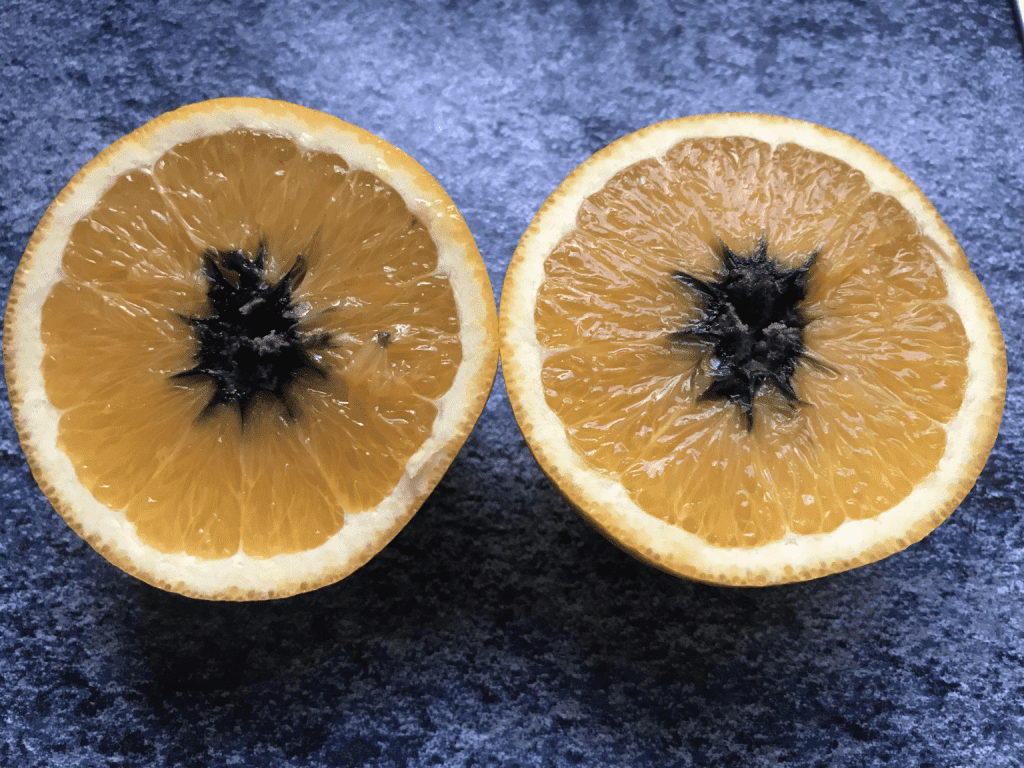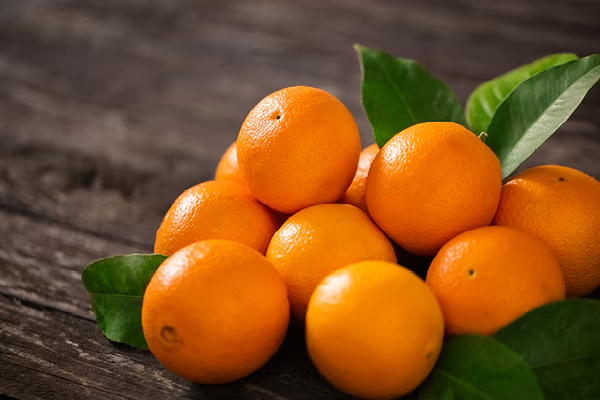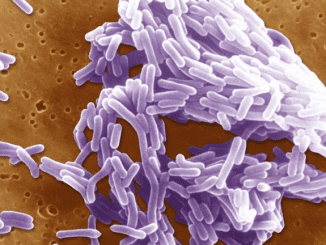Oranges are a beloved fruit known for their vibrant color, sweet tang, and refreshing taste. However, a less-than-appetizing sight can greet you when you cut one open: black spots or a dark substance inside. This unusual occurrence can raise concerns about whether the fruit is safe to eat. In this article, we’ll dive into what causes these black spots in oranges and whether consuming them poses any health risks.

What is the Black Stuff Inside Oranges?
Sometimes when you slice open an orange, you may notice black spots or dark material. This can stem from a variety of causes, ranging from natural processes to signs of spoilage. Typically, this “black stuff” could be decomposing seeds, overripe areas of the flesh, or even mold growth.
Identifying the nature of the black material is key. It’s important to assess what you’re dealing with to ensure the orange is still safe to eat.
Possible Causes of Black Spots in Oranges
1. Darkened or Decomposed Seeds
One common explanation for the black stuff inside an orange is darkened seeds. As oranges over-ripen, their seeds can turn black or dark brown. These seeds are not harmful but should be discarded, as they can have a bitter taste. Dark seeds alone typically do not mean the entire fruit is spoiled.
2. Fungal Growth and Mold
A more concerning cause of black spots is mold or fungal growth. If the black material looks fuzzy or powdery, it may indicate mold has developed on the fruit. Mold thrives in moist environments, and if oranges are stored improperly or kept for too long, they can become susceptible to it. Moldy fruit should be avoided, as consuming it can pose health risks.
3. Bruising or Physical Damage
Black spots can also form as a result of bruising or damage to the fruit. If oranges are dropped, squeezed, or handled roughly, areas of the flesh may darken. This doesn’t necessarily mean the fruit is unsafe to eat, but these bruised parts can have a slightly off texture and taste.
Is It Safe to Eat Oranges with Black Stuff Inside?
Now, onto the big question: Is it safe to eat oranges with black material inside? The answer depends on what exactly the black stuff is.
1. When It’s Safe
If the black spots are confined to the seeds or minor areas of the flesh due to over-ripening or bruising, the orange is generally still safe to consume. Simply remove the affected seeds or trim away the darkened parts, and enjoy the rest of the fruit.
Oranges are rich in vitamin C and antioxidants, so don’t be too quick to toss them out. Most of the time, these black spots are superficial and don’t affect the entire fruit.
2. When to Avoid Eating
However, if the black stuff appears to be mold, it’s best to avoid eating the fruit altogether. Mold can cause foodborne illnesses and produce harmful toxins that may not be destroyed even if the fruit is washed or peeled. Moldy oranges can emit a musty smell and may have an off-putting taste, indicating they are no longer safe to eat.

As a general rule, if you’re unsure about the cause of the black material or if the fruit smells off, it’s best to err on the side of caution and discard it.
How to Prevent Black Spots in Oranges
1. Proper Storage of Oranges
One of the best ways to avoid black spots or mold growth in oranges is to store them properly. Oranges should be kept in a cool, dry place, preferably at room temperature if you plan to eat them within a week. If you need to store them for longer, keeping them in the refrigerator will help extend their shelf life.
Oranges should also be kept away from moisture, which can encourage mold growth. Avoid stacking oranges in a way that causes pressure on the fruit, as this can lead to bruising and eventual dark spots.
2. Inspect Oranges Before Eating
Before consuming an orange, take a moment to inspect it. Look for any external signs of bruising, soft spots, or visible mold. Give it a gentle squeeze to check for firmness. If the fruit feels unusually soft or has an off smell, it may no longer be fresh.
Peel the orange carefully and take note of the color and texture of the flesh inside. If you see black seeds or a small amount of bruising, remove those parts and continue eating. However, if there’s a substantial amount of black or powdery mold, discard the fruit.

3. When in Doubt, Throw It Out
If you’re unsure about the safety of an orange after inspecting it, the best option is to toss it out. It’s not worth risking your health over a questionable piece of fruit. Trust your senses—if the orange looks, smells, or tastes off, it’s safer to discard it.
Conclusion
While encountering black stuff inside an orange can be an unpleasant surprise, it doesn’t always mean the fruit is unsafe to eat. Blackened seeds and minor bruising are generally harmless, but mold growth should be taken seriously. Proper storage and careful inspection of your oranges can help you avoid any unwanted surprises. And when in doubt, it’s always better to throw out a suspicious orange than to risk potential health issues.
By taking a few simple precautions, you can continue to enjoy the delicious, tangy sweetness of oranges without worrying about their safety.


